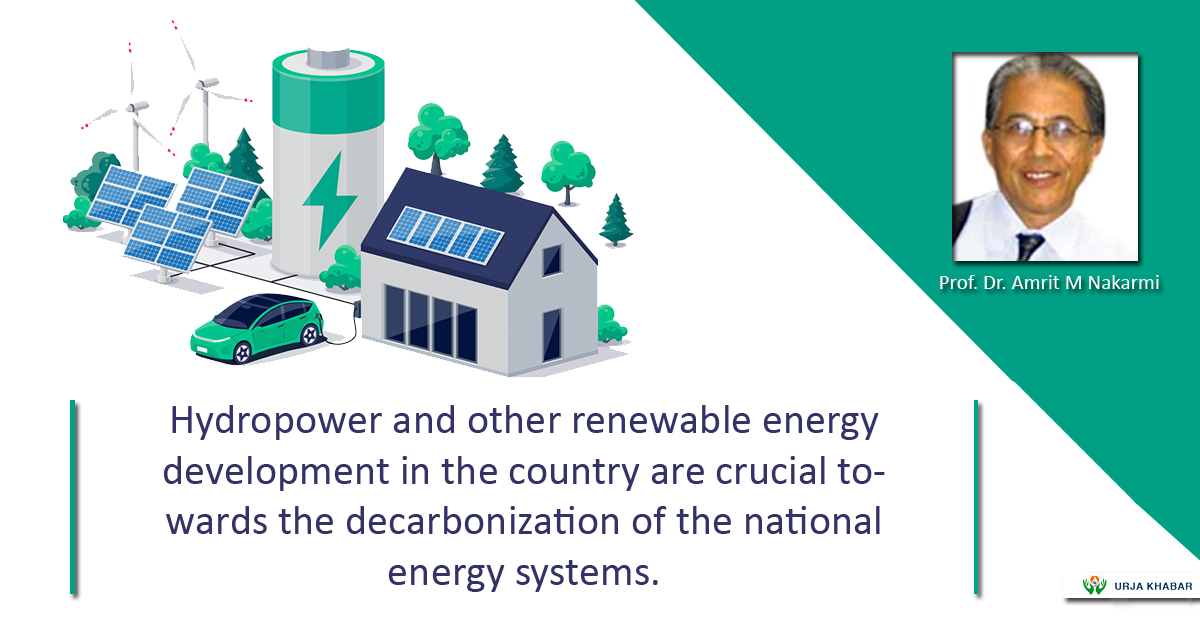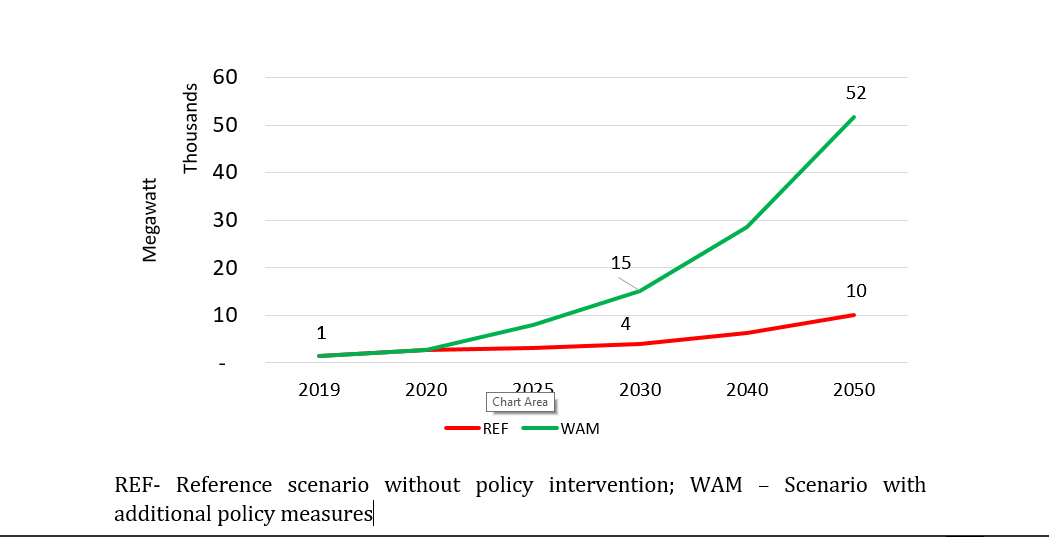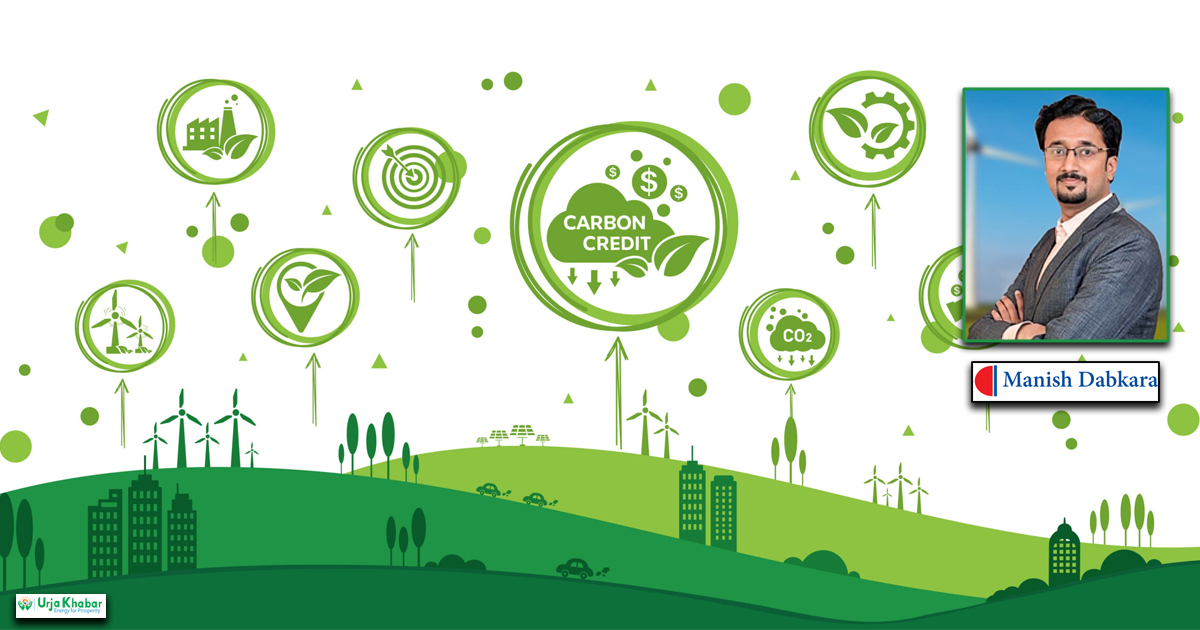Energy Update
Nepal’s clean energy resources: a big boon for achieving net zero emissions by 2045

Introduction
The energy sector is responsible for almost three-quarters of emissions globally and it is at the heart of the solution to climate change. Hence, it has been considered at prominence of the United Nations-defined Sustainable Development Goals (SDGs), started since 2015. Greenhouse gas (GHG) emissions from fossil fuels such as coal and petroleum products have been a major issue for global warming and climate change. Almost 200 countries ratified the Paris Agreement in 2015, expressing their commitments to mitigation measures for reducing the global average temperature to well below 20 C and pursuing efforts to limit it to 1.50 C by the end of the 21st century.

The contribution of Nepal in global GHG emissions is significantly low compared to other countries. Despite making notable low emissions, the country is considered one of the top ten countries most likely to be impacted by global climate change. The increasing trend of extreme climate events like flash floods, drought, forest fires and glacier lake melting are some of the major issues being and to be faced by the country.
Showing concern to the increasing global climate challenge, the Government of Nepal (GoN) became part of United Nations Framework Convention on Climate Change (UNFCCC) at Rio Earth Summit, held in June 1992. The government expressed its firm commitment to the effort to limit global temperature rise to well below 20 C above pre-industrial periods. In the process of implementing the decisions of the Conference of the Parties (COPs), Nepal submitted its first Nationally Determined Contribution (NDC) to the UNFCCC secretariat and initiated several activities to reduce climate hazards.

Nepal has recently submitted its 2020 NDC with the quantified mitigation targets along with the supporting policies for the reduction of GHG emissions. In solidarity with global efforts to mitigate CO2 emissions, the country developed and submitted a 'Long-term Strategy for Net-zero Emissions by 2045' to the UNFCCC just before the COP26 Glasgow summit held in the UK in November 2021.
In recent years, Nepal is becoming too much dependent on imported fossil fuels, with imports of petroleum products against commodity exports of Nepal jumped from 24 percent in 2004 to more than 200 percent in 2022. It has resulted in Nepal's worsening balance of payments situation. The current surge in the oil prices in the international markets as a result of increased economic activities after COVID-19 pandemic in the world and the ongoing Russia – Ukraine war have put oil importing and developing countries like Nepal in a dire situation of economic collapses. But, unlike neighboring countries which are dependent on fossil fuels-fed power systems, Nepal’s clean energy resources like hydropower and other renewable energy can be the main contributors for reducing CO2 emissions and achieving net-zero emissions even before the mid-century. Relevant policy backup, strong implementation of plans and sufficient capital investment, however, are among the prerequisites to properly harness the energy resources to achieve the goals.
Scenario Analysis for low carbon emissions
Center for Energy Studies (CES) under Institute of Engineering, Tribhuvan University, with a support from the United Nations Development Programme (UNDP), conducted a study on the long -term strategy for net zero emissions for the Ministry of Forests and Environment, Government of Nepal in 2021. An analysis of different scenarios resulting from various policy intervention measures, which used Low Emissions Analysis Platform (LEAP) modeling framework developed by the Stockholm Environment Institute (SEI), was considered for the study.
The study indicates that the energy sector of Nepal produced 12.6 million tons of CO2 emissions and 17 million tons of GHG emissions in 2019. According to the report, energy-related CO2 emissions, if proper policy measures are not undertaken for their mitigation, could reach 20 million tons in 2030 and 54 million tons in 2050, respectively. Consumption of fossil fuels, if continues unabated like in recent times, will be the main culprits in emissions of huge quantities of CO2 into the atmosphere.
Nepal has huge resources of hydro and non-hydro renewables, but their share in total energy consumption is still very low. The reports of a joint study by International Energy Agency (IEA) and International Renewable Energy Agency (IRENA) show that renewables like solar and wind are becoming technically and economically efficient. Both the IEA and the IRENA have focused on expanding electrification through harnessing renewables and energy efficient technology as a mainstay in reducing CO2 emissions and combating adverse impacts of climate change.
The study indicates that if Nepal undertakes strong policy measures for electrification in all economic sectors and if it is availed with the required capital investments from the development partners in due time, CO2 emissions from the energy sector can be reduced to 11 million tons in 2030 and 1.7 million tons in 2050, respectively – a decline of 45 percent in 2030 and 97 percent in 2050 from the business-as-usual scenario.
Generation of electricity from the renewables
In Nepal, generation of green electricity from the hydropower and the solar PV systems is taken as the main contributors in the energy transition from solid biomass and fossil fuels to clean and green energy in the country. If the country is to replace traditional means of energy completely with renewable energy, it needs to have a power generation capacity of 15,000 MW by 2030 and 52,000 MW by 2050 (including a 30 percent capacity reserve margin on peak load). Figure 1 shows the installed power capacity required for meeting electricity demand in different periods in the country.
The policy intervention envisages utility scale grid-connected solar PV systems of 2,100 MW and 1,000 MW of off-grid solar home systems and other renewables.
Co-benefits of ramping up share of renewables in the total energy systems
Harnessing the renewable energy resources for clean and green electricity will have many co-benefits. The major co-benefits are the huge reduction in CO2 emissions and fuel import costs savings. The study shows that import cost savings of fossil fuels are in the range of USD 2 billion in 2030 and they could go up to USD 19 billion by 2050. The capital costs are huge in the range of 20% of the GDP in 2030 and 16% in 2050, and the development of hydropower plants and solar PV systems can be possible only with huge financial support from the development partners and an influx of foreign direct investments.

Figure 1. Installed Capacity of Power Systems
The policy measures include electric cooking, electric passenger, private and public transport means, and electrification in all the economic sectors like households, commercial and services, agriculture, transport, and industrial sectors. They also consider penetration of green hydrogen and carbon capture and utilization and storage (CCUS) technologies in the hard -to-abate industries from 2035 onwards.
Conclusion
Hydropower and other renewable energy development in the country are crucial towards the decarbonization of the national energy systems. In addition, transmission and distribution systems within the country and cross-border infrastructure must be expanded and strengthened to promote the use of electric cookstoves, EVs, and other electrical appliances, and electrification in the industries and the transport sector. While power generation from a cleaner source is mostly used for switching from fossil fuels, there is also a need for studying the possibility of generating carbon revenue from downstream electrification and power trade across the borders for enhancing the benefits of the climate change mitigation measures.
(The article is based on the long- term strategy for net- zero emissions by 2045 submitted by the Government of Nepal to the UNFCCC).
The Writer is an Chair of Center for Energy Studies, IOE/TU; We have taken this article from Urja Khabar Semi-annual Journal Publish on 22nd June, 2022
Conversation

Prof Dr Amrit M Nakarmi
- Info. Dept. Reg. No. : 254/073/74
- Telephone : +977-1-5321303
- Email : [email protected]













